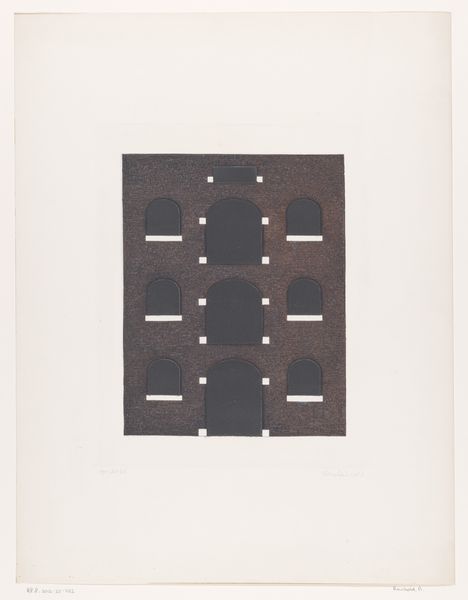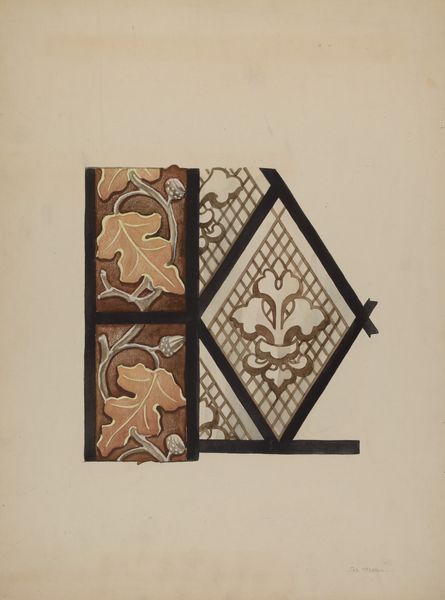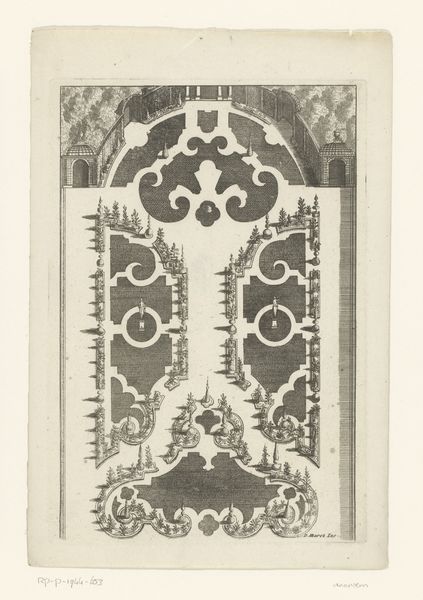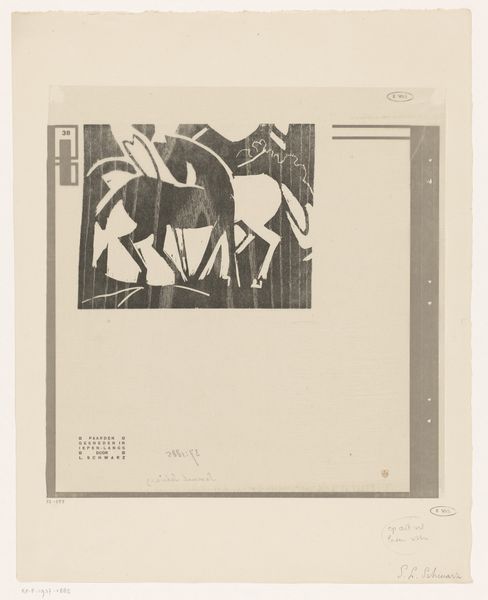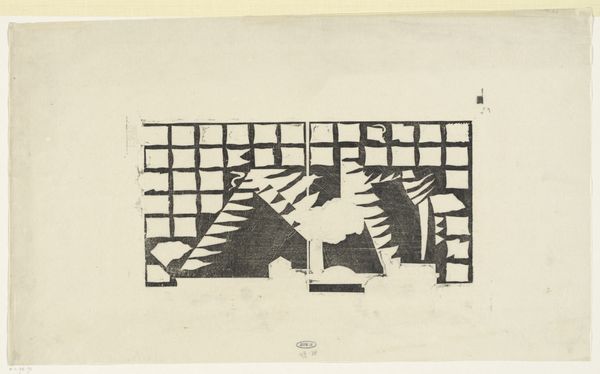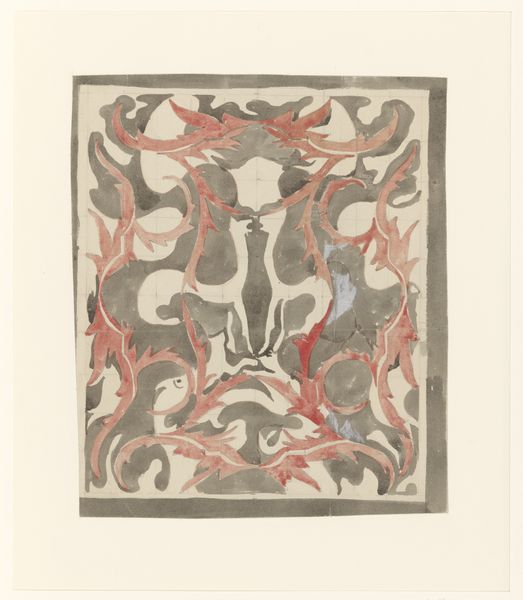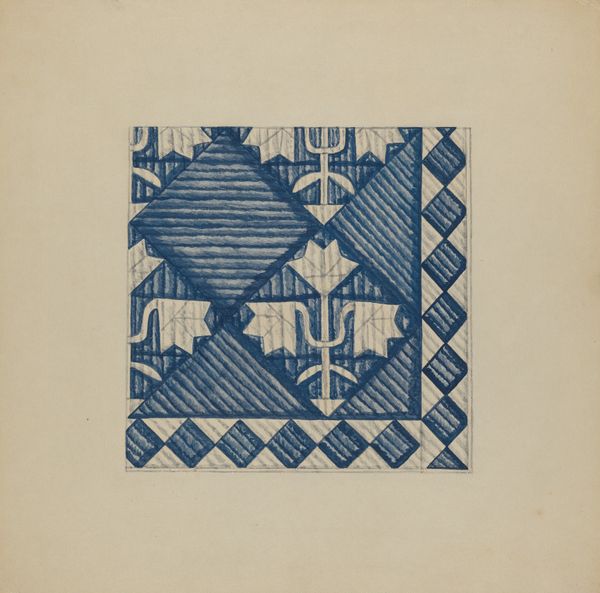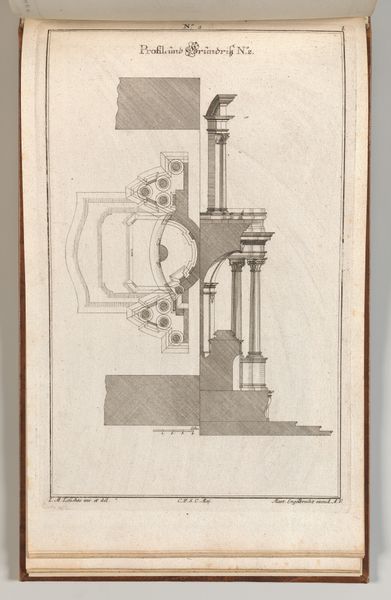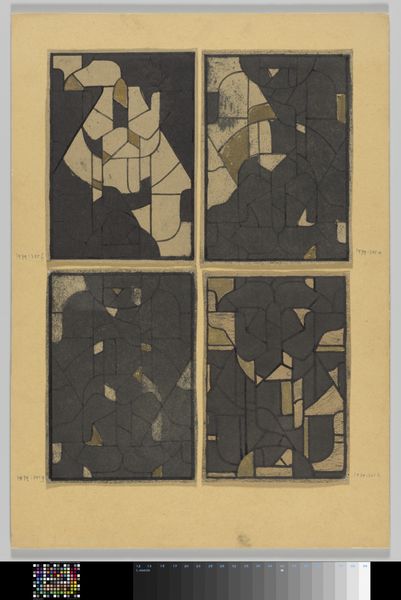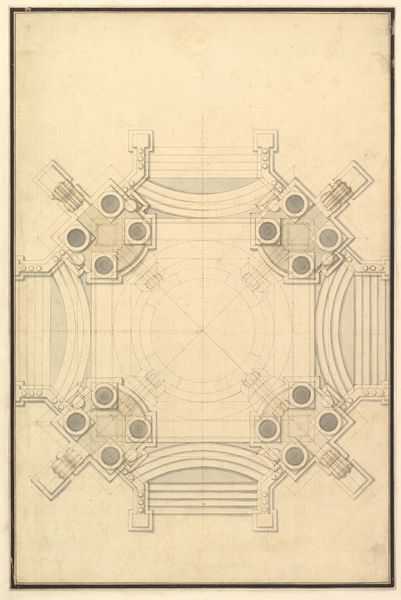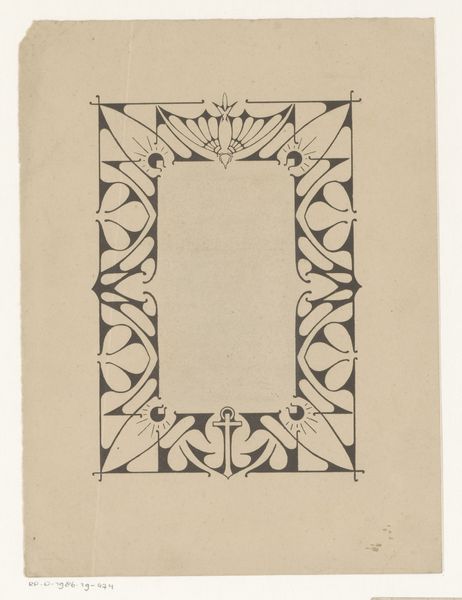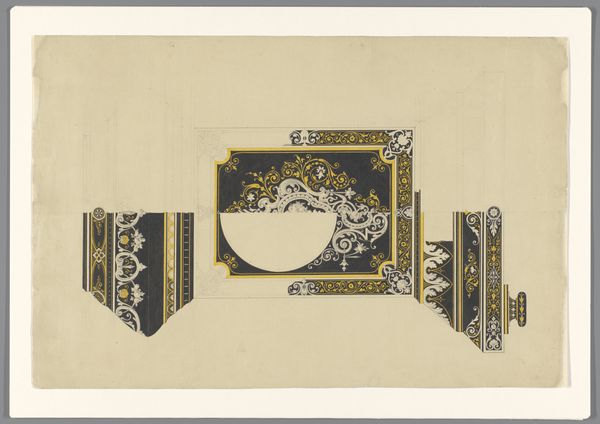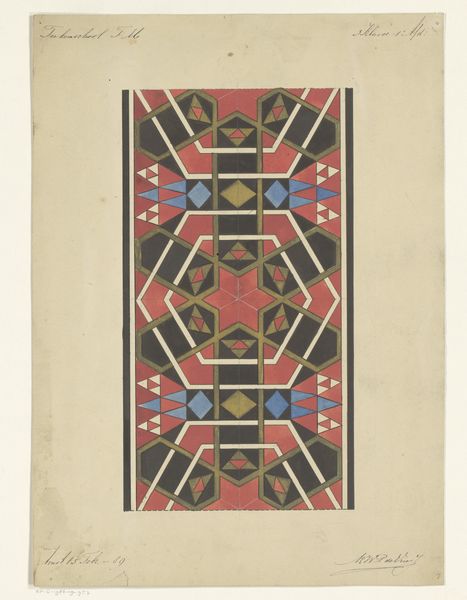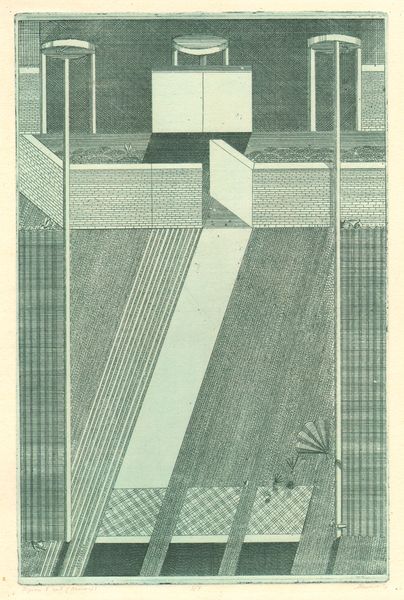
Omslagontwerp voor: Programma van het Concertgebouw Amsterdam 1921
0:00
0:00
graphic-art, mixed-media, print, woodcut, poster
#
portrait
#
art-deco
#
graphic-art
#
mixed-media
# print
#
geometric
#
woodcut
#
abstraction
#
line
#
poster
Dimensions: height 576 mm, width 415 mm
Copyright: Rijks Museum: Open Domain
Curator: What a fascinating poster. Richard Nicolaüs Roland Holst created this woodcut and mixed-media design as cover art for the Concertgebouw Amsterdam’s program in 1921. It currently resides in the Rijksmuseum. Editor: It strikes me as a bit stern, actually, despite the implied sensuality of the imagery. It feels formal and almost architecturally planned in its composition. Curator: The formality is certainly deliberate, reflecting the spirit of Art Deco, but let’s look closer. In the upper panel, a figure reclines serenely. Can we unpack that further? The four-leaf clover and other visual symbols might carry psychological weight. Editor: Given the socio-political landscape of the Netherlands in the early 20th century, I'm wondering how the commission to design a program for Amsterdam’s Concertgebouw intersected with ideas about national identity. After all, art was never truly isolated from society. Curator: Absolutely, and Roland Holst was deeply involved in socialist ideals. How might the imagery in the bottom panel – a reclining nude, perhaps a maenad amongst swirling grapes and suggestive curves, evoke concepts of leisure and pleasure. Editor: And why place that Dionysian revelry within such a rigid, geometric frame? What statement might the artist be making by setting raw abandon in such a tightly controlled setting, mirroring the very structure of the performances the poster promoted? Curator: Perhaps the contrasting visuals represent the delicate interplay between the emotional experience of music and the highly structured world that is high society, then? A reminder that the power of music stems from deep within? Editor: An interesting parallel between the social structures governing performances and the symbolic dance within the artwork itself. These tensions capture the era’s push and pull between traditional mores and burgeoning freedoms. I see art as a reflection of cultural anxieties of its time, like a societal mirror. Curator: Yes. It allows a new experience of what the cultural production was capable of then, both musically and visually, reflecting the world of symbol in plain view to its receivers then and now. Editor: Indeed. Art like this gives us an insight into the aspirations of those times. A tiny glimpse of what society values and enjoys the most.
Comments
No comments
Be the first to comment and join the conversation on the ultimate creative platform.
